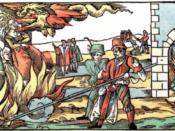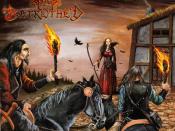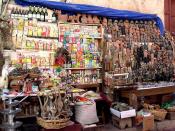The Persecution of Witches In the late 1400s, the fad of with hunting began to emerge. Thousands of innocent people were murdered between 1480-1700 for witchcraft. While there is no justification for the treacherous acts of violence performed during the witch hunts, there are various explanations to rationalize the persecution of individuals as witches.
While almost anyone was vulnerable to the accusation of witchcraft, women above their fifties and sixties who had less influential husbands were especially susceptible to this charge. According to H.C.E. Midelfort, the average age for accused witched was in the sixties. Another interesting point is that, at least in England, the wives of laborers and farmers were fodder for these incriminations. Misogyny abetted the charges against women, as many men were angered by the idea that women could take car of themselves without a husband, as they were beginning to do in these times. Also, for a while it was acceptable, even admirable, to declare that one was capable of healing by witchcraft and many widows did just that in order to earn a living.
Women were also more vulnerable to attack because many women were midwives, whose jobs were to deliver babies into the world. Due to poor health care, there was a high infant mortality rate in these times and therefore the midwives were often around death and were frequently accused of murdering these children who they were trying to bring into the world. Altogether, women were perceived to be "fragile"ÃÂ, "carnal"ÃÂ, and "imperfect"ÃÂ, according to Kramer and Spregner, which caused them to be the center of these raids for witches and other supernatural beings.
Another contribution to the persecution of innocent individuals was ignorance in part of the accusers. Many people thought that because someone was older, they were suitable for contamination by...


